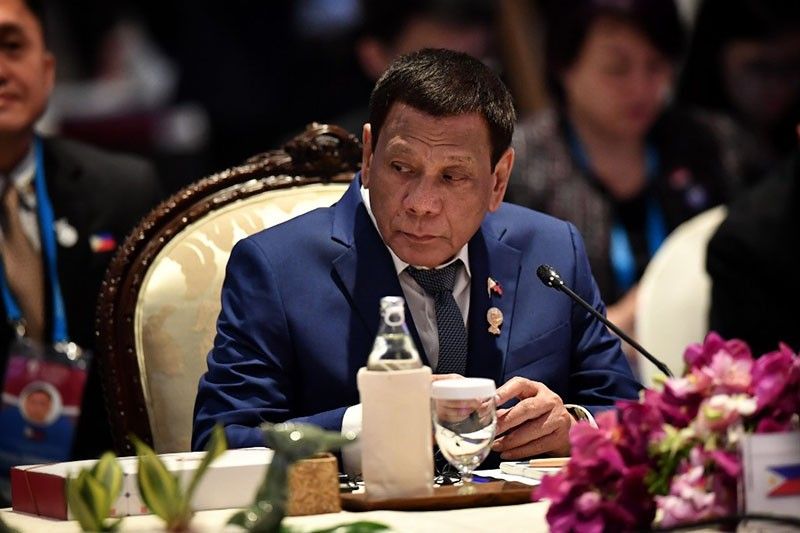Commentary: What the ASEAN has done for the Philippines

In the absence of a world government, most of the rules that countries follow in the international scene are based on shared commitments in the form of international law, arrangements and protocols.
The Association of Southeast Asian Nations has received credit internationally for maintaining peace in this part of the world using this rules-based international order. But how much can it hold up with the continuing threat from China on the territorial disputes in the South China Sea?
The ASEAN seems to have set its eyes on a Code of Conduct (COC) by 2021 as a way to regulate actions in the South China Sea, thus preventing tensions from escalating. However, experts caution the ASEAN not to work outside the parameters of international law.
The COC should merely be a confidence-building mechanism rather than a new set of laws. Otherwise, the COC might jeopardize legitimate interests of claimant countries and of the international community on freedom of navigation.
It is a tough balancing act for ASEAN. On the one hand, it is being told not to get too eager with the COC. On the other hand, the regional organization has often been criticized for its nonchalant stance on critical issues, with many believing that it can become more aggressive than its current approach and therefore be felt more and its relevance sustained.
When the ASEAN is mentioned—especially now that it is holding its biannual meeting—foremost in the minds of the few Filipinos who care to comment is the question “what has the ASEAN done for the Philippines?” For the majority, the question seems to be “ASEAN what?”
Some schools have introduced a course on ASEAN to college students seemingly to address the knowledge gap. Others have integrated ASEAN content in related courses, such as international relations, diplomacy, etc.
It is interesting to note that most college students do not know much about ASEAN, except that it exists and what the abbreviation stands for. Even basic information eludes them—such as the number of member countries and what these states are. Thus, from the cursory awareness about the organization, students are being asked to have a deeper understanding of what the organization is for and what it has accomplished in its 52 years of existence.
The general tone of the comments about ASEAN has been one of disillusionment towards what it could have achieved in its half-century existence. For ordinary Filipinos, ASEAN and its benefits surface only when it comes to travel. But the ASEAN is much more than visa-free travel to member states. The ASEAN sets out the following aims and purposes in its Declaration:
a. To accelerate the economic growth, social progress and cultural development in the region through joint endeavors in the spirit of equality and partnership in order to strengthen the foundation for a prosperous and peaceful community of Southeast Asian Nations;
b. To promote regional peace and stability through abiding respect for justice and the rule of law in the relationship among countries of the region and adherence to the principles of the United Nations Charter;
c. To promote active collaboration and mutual assistance on matters of common interest in the economic, social, cultural, technical, scientific and administrative fields;
d. To provide assistance to each other in the form of training and research facilities in the educational, professional, technical and administrative spheres;
e. To collaborate more effectively for the greater utilization of their agriculture and industries, the expansion of their trade, including the study of the problems of international commodity trade, the improvement of their transportation and communications facilities and the raising of the living standards of their peoples;
f. To promote Southeast Asian studies; and
g. To maintain close and beneficial cooperation with existing international and regional organizations with similar aims and purposes, and explore all avenues for even closer cooperation among themselves.
As a professional in the field of political science and development studies, I can attest with some degree of certainty that all these aims and purposes are—to a certain extent—being accomplished.
However, the question remains as to whether these would not have been achieved without ASEAN. It is a question of the organization’s mission. For as certain as there are accomplishments, there are failures as well. Is ASEAN a case of hit or miss?
For example, the ASEAN prides itself in having sustainable forestry management (SFM) as one of its major achievements. The organization should be more vocal in declaring support or objection to actions that harm the environment and in contradiction to ASEAN principles and concerns such as stopping the destruction of the fragile marine ecosystem of the South China Sea which is critical to the food supply of the region.
It is the so-called ASEAN Way of non-interference that may be getting in the way (no pun intended) toward the full achievement of the aims and purposes of the organization. People say that the ASEAN can devote more efforts in making itself more understood. But being more understood also means being relevant enough for people to feel the promises of ASEAN being fulfilled at their level.
Changing how the ASEAN functions, if necessary, and how people view it require time and a lot of patience. The intersection of these factors may not always be congruent. In the final analysis, what should prevail is a rules-based international order as the bedrock of having “one vision, one identity and one community.”
Edwin Santiago is a fellow and member of the editorial board of Stratbase ADR Institute, a partner of Philstar.com.
- Latest


























